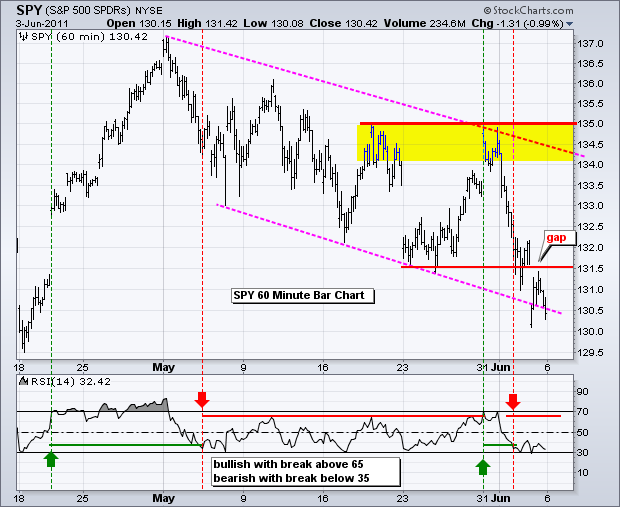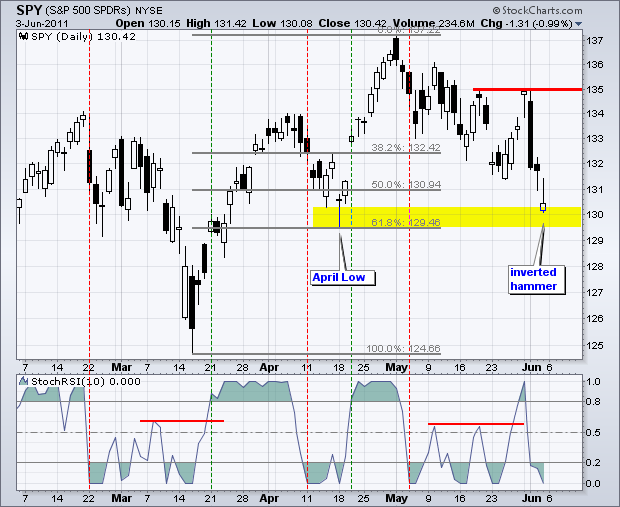Stocks remain in corrective mode, but the bigger trends are still up. With a move below 131 on Friday, the S&P 500 ETF (SPY) has retraced around 62% of the March-May advance. Keep in mind that this advance forged a 52-week high, which affirms the larger uptrend. Support in the 130 is further confirmed by the April low and Friday's inverted hammer. This bullish candlestick reversal is the opposite of a hanging man, which marked the top last Tuesday. Inverted hammers show a failed intraday rally. The ability to bounce above 131 during the day shows some buying pressure, but the inability to hold these gains questions bullish resolve. Further proof of buying pressure is needed. A move above Friday's high would confirm this candlestick and argue for an oversold bounce within the five week downtrend.
On the 60-minute chart, SPY gapped down and held the gap as the intraday rally failed to make it above 131.5. Broken support turns into resistance at 131.5 as well. This level marks the first resistance level for bottom pickers looking for an oversold bounce. At this point, stocks probably need a few days to regroup and trading could be choppy. SPY is short-term oversold after a 3+ percent decline last week. This week's economic docket is light with the Fed's Biege book marking the highlight on Thursday.

Key Economic Reports/Events:
Tue - Jun 07 - 15:00 - Consumer Credit
Wed - Jun 08 - 07:00 - MBA Mortgage Index
Wed - Jun 08 - 10:30 - Oil Inventories
Wed - Jun 08 - 14:00 - Fed's Beige Book
Thu - Jun 09 - 08:30 - Jobless Claims
Charts of Interest: Tuesday and Thursday in separate post.
This commentary and charts-of-interest are designed to stimulate thinking. This analysis is not a recommendation to buy, sell, hold or sell short any security (stock ETF or otherwise). We all need to think for ourselves when it comes to trading our own accounts. First, it is the only way to really learn. Second, we are the only ones responsible for our decisions. Think of these charts as food for further analysis. Before making a trade, it is important to have a plan. Plan the trade and trade the plan. Among other things, this includes setting a trigger level, a target area and a stop-loss level. It is also important to plan for three possible price movements: advance, decline or sideways. Have a plan for all three scenarios BEFORE making the trade. Consider possible holding times. And finally, look at overall market conditions and sector/industry performance.







